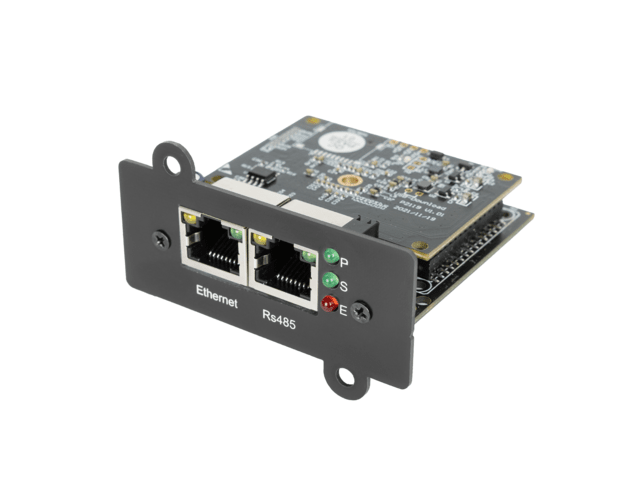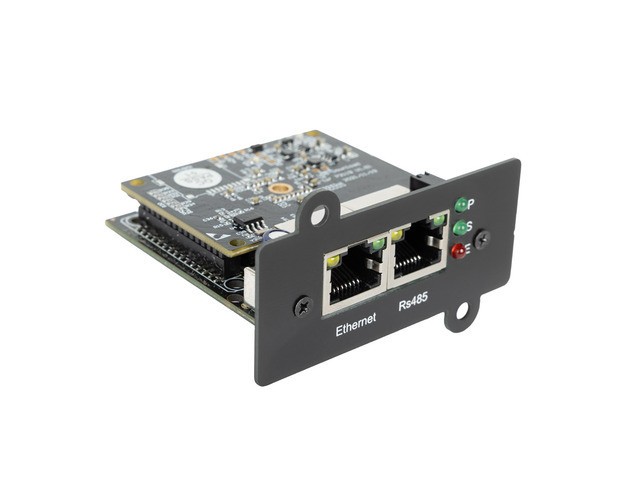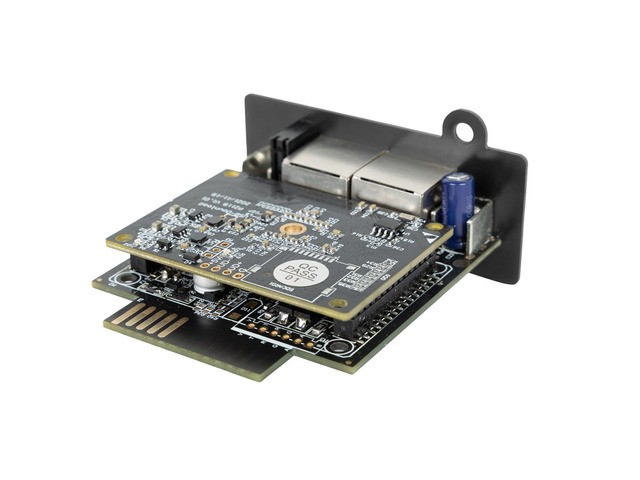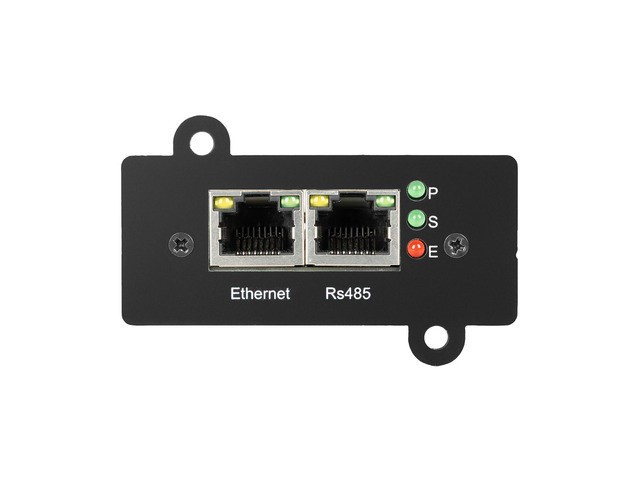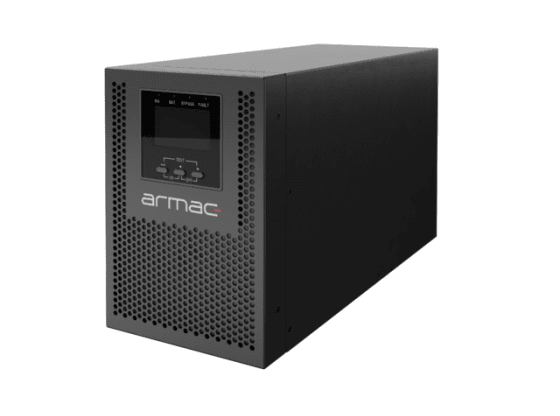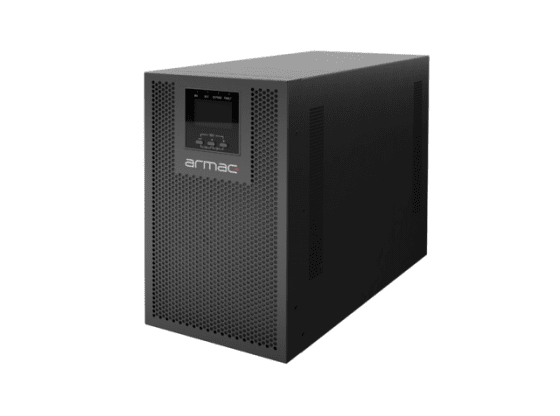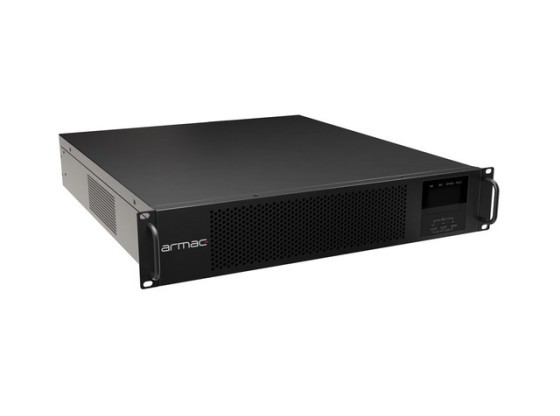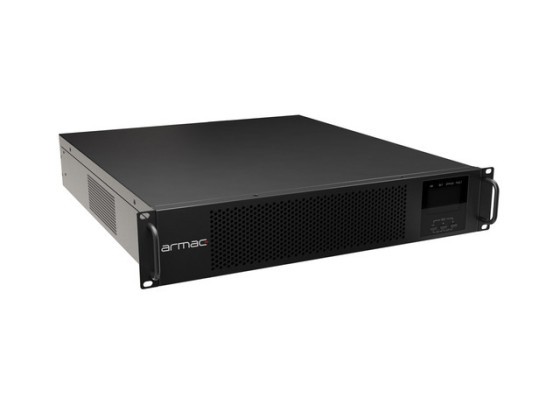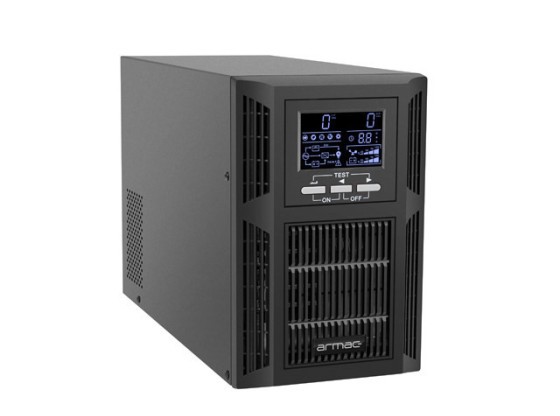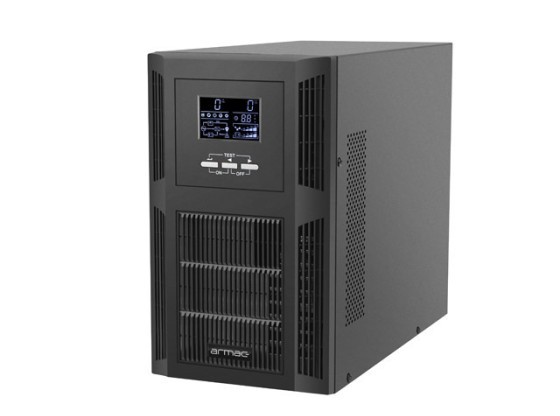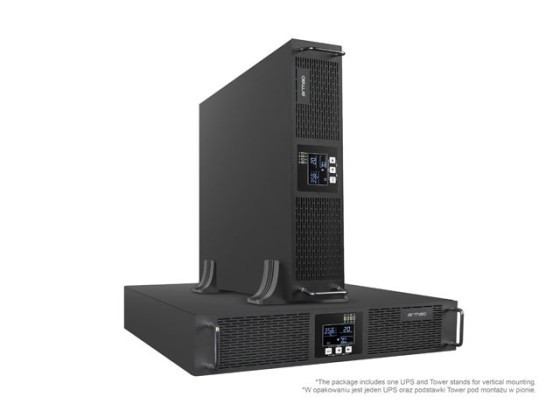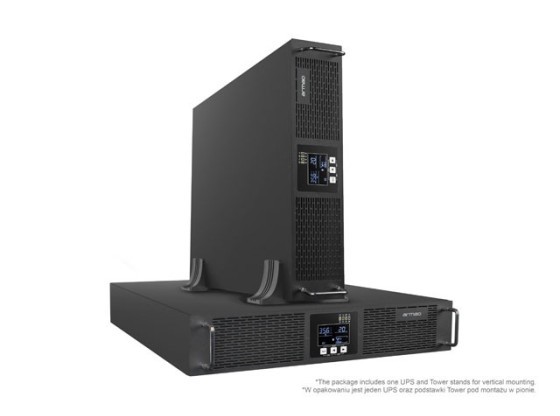SNMP CARD MODULE FOR ARMAC UPS
Product description

SNMP card for UPS - extension for Armac uninterruptible power supplies
The SNMP network card is a communication accessory that extends the capabilities of compatible Armac-Energy UPS units with full real-time management and monitoring from anywhere via a web browser and SNMP manager. With integrated network access, users can schedule UPS shutdowns, startups, or mode changes, view basic battery status and key parameters—all without installing additional software. The solution supports event logs, self-test schedules, email notifications, SNMP traps, and custom alarm limits, providing centralized control over the entire emergency power system.

Modbus 485 Poll/Slave & Modbus TCP/IP:industrial-grade connectivity
Modbus RTU (485): the card can operate as Poll (master), where in this mode it allows querying up to 8 external sensors/devices, or as Slave, providing UPS parameters to e.g. PLC controllers. The modes are switchable and mutually exclusive.
Flexible configuration: regardless of the mode, the user defines the bandwidth, parity, device address number, functions, and in Poll mode, specifies the exact registers from which the card is to retrieve data.
Modbus TCP/IP protocol: encapsulates RTU frames in Ethernet packets (port 502, which can be changed), enabling remote access to UPS parameters using this protocol where a physical connection is not directly possible. Thanks to this implementation, there is no need to run a cable to connect end devices using Modbus TCP/IP or those that require a physical port using a TCP/IP to RTU converter.
The SNMP card also has an additional automatic fuse that protects against current overload (of the card itself and the UPS) and incorrect connection (works against short circuits). The fuse prevents Modbus devices from being connected that would draw power from the card for their own power supply, as this could cause restarts by activating this fuse (due to high power consumption).
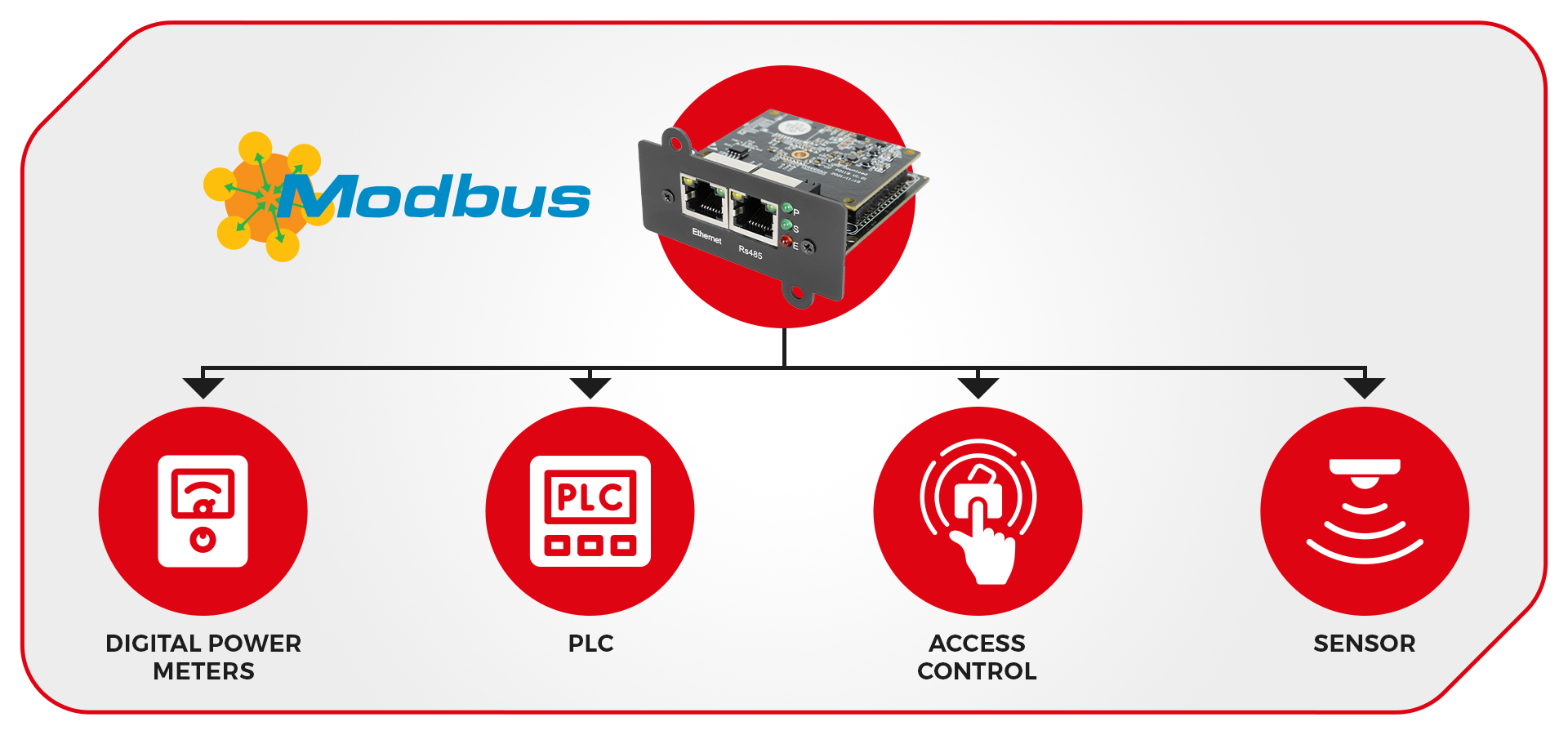
SNMPv1 / SNMPv2c / SNMPv3 basic:network management of multiple UPS units
The card's SNMP agent supports UPS-MIB (RFC1628) and its own implementation of the so-called private enterprise (PPC), which allows for extensive control of various parameters not only of the UPS itself, but also of environmental sensors (EMD) connected by the card user. SNMP TRAP enables automatic (passive) alarm notification in versions 1 and v2c, and the ready-made UPS control set on the website provides simple control commands (10-second test, bypass on/off, buzzer off). The basic version of v3 provides login and password authentication.

Compliance with RFC 1628 UPS-MIB
The RFC1628 standard defines a uniform, standardized set of objects (known as OIDs) — from UPS statuses, operating parameter values, and batteries to alarms and tests — for each UPS. The Armac card supports all important OIDs of this RFC and extends the default resolution of this MIB data representation by providing values with a decimal part (mV, 0.1 Hz, 0.01 °C), which facilitates precise load and temperature monitoring without the need for PPC-type implementations.
SMTP with SSL, NTP, and DNS: secure notifications
MTP (TLS/SSL, STARTTLS): sending alerts to multiple email accounts (with authorization).
NTP: automatic clock synchronization, ensuring that SNMP and CSV logs have consistent timestamps with other devices within a given organization or system.
DNS: host name resolution.
Other technologies and functionalities
Wake On LAN – the ability to remotely turn on a server/PC (if they support this feature) after power is restored or the UPS returns from battery operation.
Task schedule – periodic UPS* switching on/off, battery tests, calibrations.
Configurable alarm thresholds for voltage, temperature, humidity, and battery life.
Remote code execution enabling control of any device using SSH or Telnet. No additional software is required to, for example, turn off a server or execute a user-defined script. With this function, dedicated commands are executed by the SNMP card for each type of event for each device.
Event and operating parameter logging provides a simple and intuitive historical overview of the UPS operating environment. Predefined alerts and those activated after the user sets alarm thresholds allow you to verify the status of the UPS and its operating modes, and the recording of parameters allows you to check the input and output mains power supply and certain components – in both cases over a given period of time. The CSV export option, always located in the same network location as the SNMP card, allows for convenient downloading of this data by the user and external network device monitoring systems, simplifying monitoring and management to a minimum, while the Send Log option allows for the periodic sending of logs to specific email recipients using the SMTP protocol.
Easy firmware (FW) updates via the web interface.
Why Armac-Energy?
We focus on reliability, open standards, and simple integration with existing IT and automation infrastructure. The SNMP card for Armac UPS is a compatible network M C (NMC) plug-in that allows remote control of the UPS and monitoring of critical data in a unified management environment, providing access to it through multiple interfaces. It is the ideal solution for installers, administrators, and end users who, in line with our mission of “Creating Good Energy,” want to combine power protection with intelligent analytics.

